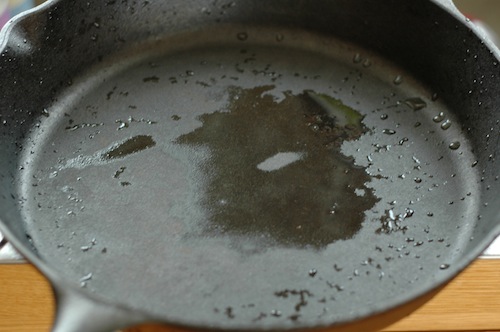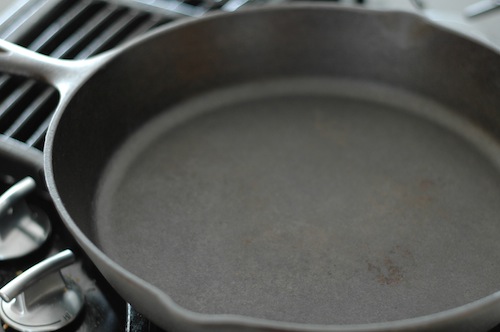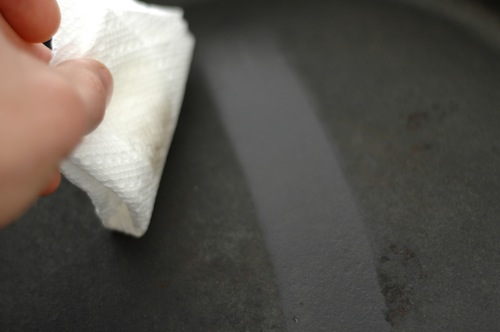
Last fall, I jokingly tweeted:
If you asked me in all seriousness if I would ruin a cast iron pan then, I would have answered in the affirmative. In fact, a few years ago I bought a nice cast iron skillet for the grill. After having left it outside numerous times (because it was too hot to bring inside after grilling) and letting the rain cause it to rust, it’s basically useless until I get around to sandblasting it and re-seasoning it.
My future brother-in-law and his wife didn’t know this, so they graciously gifted me with two really nice Lodge cast iron pans for Christmas. Apparently I have matured because I’ve taken remarkably good care of them and I’ve learned a couple tricks to caring for cast iron pans. My main pan has an amazingly seasoned surface, and it literally gets better with every use.
The most important part of seasoning cast iron (keeping it nice and non-stick), I learned through my copious research over Christmas, is the type of oil you use. You might think the best oil would be a saturated fat such as lard or tallow, but you’d be wrong. This blog post does a great job of explaining the science behind it, but I’ll give you the TL;DR version:
Saturated fat is inappropriate for the exact reason that it is so stable and good for cooking – it doesn’t oxidize easily. To season a pan, you actually want oxidation to occur. Hence, you want to go to the opposite end of the oil spectrum. In her post Sheryl recommends flaxseed oil, as it is highly oxidizable and in fact is usually refrigerated. I think you can get away with canola oil, and still get great results – but it won’t be as good as flax oil will be.
Every time I use the pan this is what I do:
- Wash the pan as soon as it cools down. Never soak it for hours. Soak for a few minutes if you have stuff really stuck to it.
- Scrub it clean with a stiff brush and soap. Soap is not going to take the seasoning off a properly seasoned pan.
- Dry it off with a towel or paper towel.
- Put it on the stove and heat it up until it’s completely – usually only takes a minute or two. Turn the burner off.
- Take a tiny bit of oil on a paper towel, and brush the entire surface of the pan.
- Flip the paper towel over to the dry side, and rub the pan completely so the layer of oil is as thin as possible.
- Let it cool down and put it away, or leave it on the stove.







Yeah, #science!
Sweet post, yo.
If you have a cast iron pan that you have not taken care of the right way before, is it still possible to catch up on seasoning it the right way? Ours isn’t rusty, but I definitely have abused it a bit. 🙂
Jessica,
Check out this post from the same blog I linked to above. She outlines some pretty easy steps to restore a pan. It takes some work, but it’s worth it to have a beautiful surface to start from. Then follow my steps and you’ll have a perfect cast-iron pan that is as good or better than a non-stick.